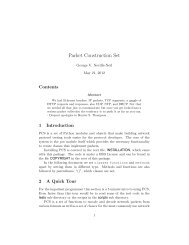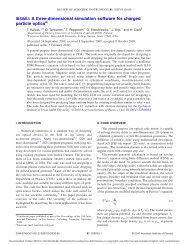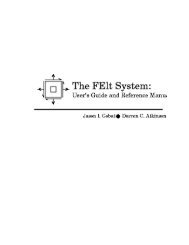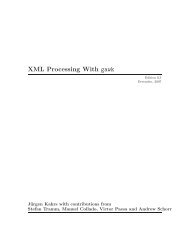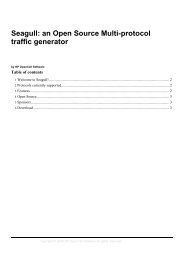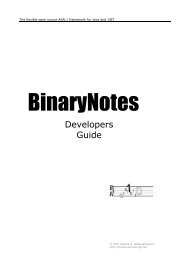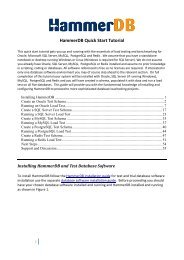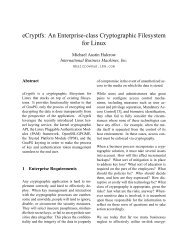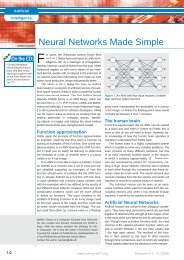System Management Bus (SMBus) Specification, version 2.
System Management Bus (SMBus) Specification, version 2.
System Management Bus (SMBus) Specification, version 2.
Create successful ePaper yourself
Turn your PDF publications into a flip-book with our unique Google optimized e-Paper software.
<strong>System</strong> <strong>Management</strong> <strong>Bus</strong> (SM<strong>Bus</strong>) <strong>Specification</strong> Version <strong>2.</strong>0<br />
Appendixes at the end of this document contain additional information and guides to implementation that<br />
the reader may find useful.<br />
1.5. Supporting documents<br />
This specification assumes that the reader is familiar with or has access to the following documents:<br />
• The I²C-bus and how to use it, Philips Semiconductors document #98-8080-575-01.<br />
• ACPI <strong>Specification</strong>, Version 1.0b, Intel Corporation, Microsoft Corporation, Toshiba Corp., February<br />
2, 1999 (http://www.teleport.com/~acpi)<br />
• PCI Local <strong>Bus</strong> <strong>Specification</strong>, revision <strong>2.</strong>2, December 18, 1998, (http://www.pcisig.com)<br />
• SM<strong>Bus</strong> Control Method Interface <strong>Specification</strong>, Version 1.0, Smart Battery <strong>System</strong> Implementers<br />
Forum, December 1999<br />
1.6. Definitions of terms<br />
The following terms are defined with respect to this specification and may have other meanings in other<br />
contexts. Some of these terms are used throughout the specification while others have meaning only within<br />
limited portions. They are defined here so that the reader may be able to find their definitions in one place.<br />
Address Resolution Protocol<br />
Address Resolved flag (AR)<br />
Address Valid flag (AV)<br />
ARP<br />
SM<strong>Bus</strong> ARP Enumerator<br />
ARP Master<br />
Assigned Slave Address<br />
<strong>Bus</strong> Master<br />
<strong>Bus</strong> Slave<br />
Fixed Slave Address<br />
A protocol by which SM<strong>Bus</strong> devices with assignable addresses on the<br />
bus are enumerated and assigned non-conflicting slave addresses.<br />
A flag bit or state internal to a device that indicates whether or not the<br />
device’s slave address has been resolved by the ARP Master.<br />
A flag bit or state internal to a device that indicates whether or not the<br />
device’s slave address is valid. This bit must be non-volatile for devices<br />
that support the Persistent Slave Address.<br />
Address Resolution Protocol<br />
An SM<strong>Bus</strong> master that uses a subset of the ARP for the purpose of<br />
discovering ARP-capable slave devices and their assigned slave<br />
addresses.<br />
The SM<strong>Bus</strong> master (hardware, software or a combination) responsible<br />
for executing the ARP and assigning addresses to ARP-capable slave<br />
devices. The SM<strong>Bus</strong> Host will usually be the ARP Master but under<br />
some circumstances another SM<strong>Bus</strong> master may assume the role. There<br />
is only one active ARP Master at any time.<br />
The address assigned to a slave device by the ARP Master. This address<br />
is then used for accesses to the device’s core function. Legal values are<br />
in the range 0010 000 to 1111 110 with some exceptions (associated<br />
with reserved addresses and those consumed by Fixed Slave Address<br />
devices).<br />
Any device that initiates SM<strong>Bus</strong> transactions and drives the clock.<br />
Target of an SM<strong>Bus</strong> transaction which is driven by some master.<br />
A slave address that cannot be changed. Non-ARP-capable SM<strong>Bus</strong><br />
devices fall into this category. The ARP Master must not assign a used<br />
SBS Implementers Forum 6



